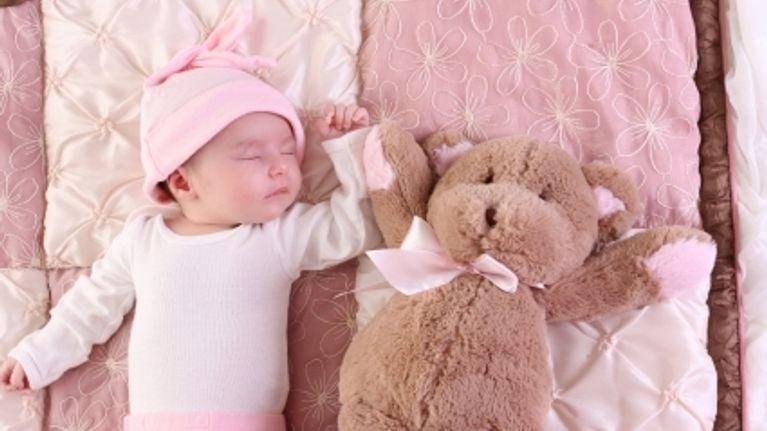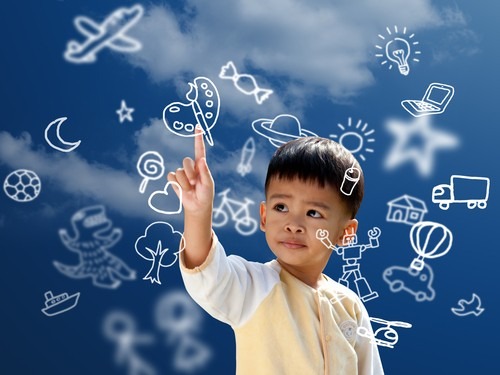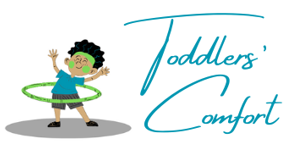Babies and their toys share a connection that goes far beyond mere playtime. These simple objects become cherished companions, offering comfort, security, and a way for babies to express emotions that they cannot yet verbalize. From the moment a baby grasps their first toy, a powerful emotional bond is formed, one that can influence their development in profound ways. Whether it’s a soft blanket, a plush teddy bear, or a beloved rattle, these objects become emotional anchors, helping babies navigate their earliest experiences of comfort, fear, and love.
The Importance of Comfort Objects in Infancy
In the early stages of life, babies begin forming attachments to comfort objects. A comfort object is anything that a baby turns to for solace in times of distress. It might be a soft blanket, a stuffed animal, or even a favorite pacifier. These items serve as transitional objects that bridge the emotional gap when a caregiver is not present. Babies instinctively cling to these objects, and the bond they form can be incredibly deep.

A comfort object becomes a baby’s source of emotional regulation, helping them calm themselves in unfamiliar situations or when they feel separation anxiety. Holding onto a soft toy or blanket can offer a sense of reassurance, reminding them of the presence and care of their parents, even when they are physically absent. This emotional bond is not just about the object itself but about the feelings of love and safety that the object represents.
Toys as a Source of Security and Stability
Imagine a baby holding a small, cuddly toy while falling asleep. That tiny stuffed bear or soft blanket becomes a source of stability in a world that can often feel big and overwhelming. In moments of stress—whether it’s meeting new people, visiting an unfamiliar place, or simply waking up in the middle of the night—babies instinctively reach for their favorite toy. These toys provide a sense of security, acting as a protective buffer between the baby and the outside world.
Babies often turn to these toys in times of uncertainty because the familiarity of the object provides emotional consistency. When everything around them feels unfamiliar, their favorite toy remains the same, comforting them with its constant presence. It’s no wonder that so many children hold onto their cherished toys for years, long after they’ve outgrown infancy. These objects become emotional touchstones, reminding them of a time when they felt safe, loved, and protected.
The Role of Familiarity in Emotional Development
Familiarity plays a crucial role in a baby’s emotional development. Babies don’t just pick a toy at random; they form deep attachments to specific items because of the sense of familiarity they provide. A baby might prefer one particular stuffed animal over all others, not because it’s the fanciest or most entertaining, but because it feels familiar. They know its smell, its texture, and even the sound it makes when they hold or shake it.
This attachment to familiarity is a natural response to the world’s overwhelming stimuli. Babies are constantly surrounded by new sights, sounds, and experiences, and it can be a lot to process. Having a familiar object—like their favorite toy—provides a comforting sense of predictability. It helps them build emotional stability in a world that can sometimes feel too big and too new. The emotional connection to a familiar toy is rooted in the consistency it offers, allowing babies to feel grounded in their surroundings.
The Power of Softness: Texture and Emotional Responses
Toys are not all created equal in the eyes of a baby, and one key difference is texture. Soft toys, in particular, evoke strong emotional responses in babies. There’s something undeniably comforting about the feel of a plush teddy bear or a soft blanket. The tactile sensation of softness calms babies, triggering emotional responses that make them feel secure and loved.
For babies, the sense of touch is one of the primary ways they interact with the world, especially in the early months. A soft toy can soothe them in ways that are almost instinctual. The softness against their skin provides a gentle, calming presence that reduces stress and anxiety. This is why babies often seek out their soft toys when they are upset or tired—it’s their way of self-soothing, an emotional response built on the comforting sensation of touch.
Imagination and Emotional Expression
As babies grow, their toys become more than just objects of comfort—they become extensions of their imagination. It’s through play that babies start to express their emotions, often projecting their feelings onto their toys. A stuffed animal might become a best friend, a companion to talk to, or even a protector against the fears of the unknown. Through imaginative play, babies begin to explore their emotional world, using toys as a safe outlet to express feelings of joy, sadness, and curiosity.

This process of emotional expression is a crucial part of a baby’s development. Play allows babies to experiment with emotions they may not yet fully understand. For instance, a baby might hug their stuffed toy when they feel scared or talk to it when they feel lonely. This early form of emotional expression is vital for developing emotional intelligence, as it helps babies begin to understand and navigate their feelings.
Development of Trust Through Play
Toys also play a role in the development of trust. When babies engage in play, especially with a caregiver, it fosters a sense of trust and security. Playtime with a beloved toy can become a bonding experience between the baby and their caregiver, reinforcing the emotional connection between them. For example, when a caregiver pretends to feed a baby’s toy or takes part in an imaginative game, the baby learns that they can trust their caregiver to engage with them emotionally and be present in their world.
This shared playtime strengthens the baby’s emotional attachment to both the toy and the caregiver. Over time, the baby associate their favorite toys not only with personal comfort but also with the trust and love they feel from the people around them. The emotional bond grows stronger, creating a foundation of trust that will serve as the basis for future emotional connections.
Toys as a Reflection of a Baby’s Personality
One of the most heartwarming aspects of a baby’s relationship with their toys is how these objects can reflect their emerging personalities. Some babies may gravitate toward cuddly, soft toys, while others may prefer toys that challenge their developing skills, like puzzles or building blocks. These preferences often give us insight into a baby’s budding personality, revealing whether they’re more inclined toward nurturing, adventurous, or curious tendencies.
The choices a baby makes in their toys can offer a glimpse into who they are becoming. A child who repeatedly chooses a stuffed bear to carry around may be showing early signs of empathy and affection, while a baby who enjoys more interactive toys may demonstrate a strong desire to explore and learn. These individual preferences highlight the emotional uniqueness of each baby and their growing self-awareness.
The Influence of Caregivers on Toy Attachment
Parents and caregivers play a significant role in the emotional attachment a baby forms with their toys. Often, the way a toy is introduced—whether it’s lovingly handed to the baby during a bedtime routine or playfully used in a game—can affect the emotional significance the baby attaches to it. When caregivers are emotionally present during play, it adds depth to the bond the baby forms with their toy.
This emotional involvement from caregivers can make the toy feel even more special. For instance, if a baby receives a stuffed animal from a parent during a moment of shared joy or comfort, the emotional connection to that toy becomes stronger. It’s not just a toy anymore—it’s a reminder of the love and care the baby receives from their parent. This association adds a layer of emotional depth to the baby’s relationship with their toy.
Toys as Transitional Objects
Perhaps one of the most important roles toys play in a baby’s life is that of a transitional object. A transitional object is something a baby uses to bridge the emotional gap when they are separated from their primary caregiver. For many babies, their favorite toy becomes a stand-in for the emotional comfort their parent provides. Whether it’s during bedtime, daycare, or a car ride, these toys help babies manage separation anxiety.
The toy becomes a reminder of the parent’s love and security, easing the baby’s anxiety during times of separation. For many children, their favorite toy goes everywhere with them, providing an emotional anchor that helps them feel safe in the absence of their caregiver. This role as a transitional object is why many babies continue to hold onto their favorite toys well into childhood, and sometimes even adulthood.
The Psychological Benefits of Play with Toys
The emotional benefits of playing with toys extend beyond comfort and security. Toys also play a crucial role in helping babies process and reduce anxiety. When babies engage in play, especially with familiar and loved toys, it allows them to work through their fears and anxieties in a safe and controlled environment. For example, a baby who is afraid of the dark might use their stuffed bear as a protector during bedtime, helping them feel less scared.
Through play, babies learn to cope with their emotions in healthy ways. Toys provide an outlet for emotional expression and a way to process feelings like fear, excitement, or frustration. This is a crucial aspect of emotional development, as it teaches babies how to manage their emotions in positive ways.
Toys and Emotional Milestones
Toys are not only important for emotional development but also for achieving key developmental milestones. As babies grow, their emotional relationship with toys evolves. At first, a toy might simply provide comfort, but as the baby’s cognitive and emotional abilities develop, toys become a way to explore the world. This progression marks important emotional milestones, as babies learn to engage with toys in more complex and meaningful ways.
For example, a baby might begin by simply holding a stuffed animal for comfort, but as they grow, they might start using that same stuffed animal in imaginative play, projecting emotions onto it and even creating elaborate stories around it. These evolving interactions reflect the baby’s emotional growth and their increasing ability to understand and manage their feelings.
The Universal Appeal of Certain Toys
Certain toys, like teddy bears or soft blankets, seem to have a universal appeal for babies. There’s something about these timeless objects that resonates emotionally with children all over the world. It’s not just about the softness or the design—it’s about the emotional comfort these toys provide. They become symbols of love, safety, and warmth, universally cherished across cultures and generations.
The emotional impact of toys like teddy bears lies in their simplicity and their ability to provide unconditional comfort. No matter where in the world you go, you’ll find children cuddling teddy bears or clutching blankets, and the emotional connection they feel is universal. These toys offer a sense of security that transcends cultural boundaries, making them beloved by children everywhere.
The Cultural Significance of Toys
Toys also carry significant cultural meaning. In many cultures, certain toys are passed down from generation to generation, creating a sense of continuity and emotional connection within families. These toys often become cherished family heirlooms, representing not only childhood but also the love and care of past generations. The emotional significance of these toys is deeply ingrained in family traditions, making them more than just objects of play—they become symbols of familial love and continuity.
In some cultures, toys are also used in rituals and celebrations, further highlighting their emotional significance. Whether it’s a handmade doll passed down through generations or a special toy gifted during a rite of passage, these objects carry emotional weight that connects children to their cultural heritage and family history.
Conclusion
The emotional connection between babies and their toys is profound and far-reaching. These cherished objects offer comfort, security, and a way for babies to explore and express their emotions. From the first cuddle with a soft toy to the imaginative stories created during play, toys become trusted companions that help babies navigate their emotional world. They are more than just objects—they are emotional anchors that provide stability and love in an often overwhelming world.
As babies grow, their relationship with their toys evolves, marking emotional milestones and shaping their future emotional connections. The attachment babies form with their toys is a powerful reminder of the importance of comfort, familiarity, and emotional expression in early development. These early bonds with toys lay the foundation for future relationships and emotional resilience, making them a crucial part of a baby’s emotional journey.
FAQs
Why do babies become so attached to their toys?
Babies form attachments to toys because these objects offer comfort and familiarity, helping them feel secure in new or stressful situations.
How can toys help a baby cope with anxiety?
Toys serve as transitional objects, providing emotional stability during times of separation or change, and helping babies manage anxiety.
What should parents consider when choosing toys for emotional development?
Parents should choose toys that are soft, comforting, and safe, with textures and designs that encourage soothing and imaginative play.
Can toys help build a baby’s trust in their caregivers?
Yes, when caregivers play with babies and their toys, it strengthens the emotional bond and builds trust between them.
Do different types of toys influence emotional development differently?
Absolutely, soft toys offer comfort, while interactive or exploratory toys foster confidence, imagination, and emotional expression.


